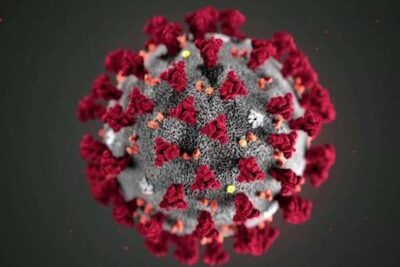
Study says Covid is airborne: The Lancet
A study published in The Lancet, a weekly peer-reviewed general medical journal, has stated that SARS-CoV-2, the virus that causes COVID-19, is an airborne pathogen. The report is written by six experts from the US, the UK and Canada. The report goes against the predominant scientific view which says that coronavirus spreads through smaller aerosols that remain suspended in the air or through fomites. The authors of the report have given 10 reasons which back their claim that “SARS-CoV-2 is transmitted primarily by the airborne route”.
Here are the 10 reasons cited in the study:
- Detailed analysis of human behaviours and interactions, room sizes, other variables are consistent with the airborne spread of SARS-CoV-2. The report states that the same cannot be fully explained by droplets or fomites.
- Long-range transmission of SARS-CoV-2 between people in adjacent rooms but never in each other’s presence has been documented in quarantine hotels.
- 33 per cent to 59 per cent of all coronavirus cases can be attributed to the asymptomatic or pre-symptomatic transmission without the infected person coughing or sneezing.
- The transmission of the pathogen is higher indoors compared to outdoors. Transmission is substantially reduced by indoor ventilation, according to the authors.
- Nosocomial infections (those that originate in a hospital) have been detected even in places where healthcare professionals wore PPE to protect themselves against the virus transmission through droplets.
- Viable SARS-CoV-2 has been detected in the air. During laboratory experiments, the pathogen stayed infectious in the air for up to three hours.
- The pathogen has been detected in air filters and buildings ducts in hospitals with COVID-19 patients in them. Such locations could be reached only by aerosols.
- Studies conducted on infected caged animals showed SARS-CoV-2 being transmitted via an air duct.
- There is no study to their knowledge that provides strong or consistent evidence that disproves their hypothesis.
- Limited evidence that supports other dominant routes of SARS-CoV-2 transmission.
The report’s claims, if accepted by the broad scientific community, could have massive implications on how people fight Covid-19.
The report mentions that reducing airborne transmission of virus requires measures to avoid inhalation of infectious aerosols, including ventilation, air filtration, reducing crowding and time spent indoors, use of masks whenever indoors, attention to mask quality and fit, and higher-grade protection for health-care staff and front-line workers.



